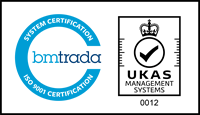Blog
Strategies for Shaping Employee Expectations and Engagement in 2024
Posted on: Tuesday January 30, 2024

Don’t look now but the younger generation is arriving. They’re hungry, tech-savvy and they care. They care about their roles, about how their company behaves, about the environment and about how people are treated. They care about their salaries and career progression too, so those things are still very much in the forefront, along with everyone else’s interests and priorities.
Our key HR pillars - recruitment, retention, motivation, performance and productivity – do not change from one year to the next, but what do they mean and require in 2024 and beyond?
After a tough few years, now is the time to sit down, breathe a little and take stock of the experiences and learnings of COVID-19, the post-pandemic period and the cost-of-living crisis, to future-proof for the challenges ahead.
Career 2.0 – a Series of Experiences
There is a growing expectation that the way we work should better mirror the way we live. If Amazon and Netflix can give us what we want, when we want it, how can jobs and careers try to do the same to improve retention?
Moving forward, is there an argument for a ‘career’ to be presented not as a mundane linear treadmill of earned progression steps, but as a flexible series of work-life experiences? And dare we think about employees as ‘consumers’ who know what they want and when they want it? This may sound radical but for some businesses, it may only require a revamp of current PPD programmes and staff movement models.
After all, not every worker immediately lands in the right role anyway. When you join an organisation there are so many things you don’t know, from what the company is like and how the role will pan out to the people you are with and your chances of progression. If all this could be pre-empted by a more modular, circular take on things, people may never feel compelled to leave. Instead of another new start across town, they might move down the corridor or across the depot.
Benefits for all
The same logic can be applied to more personalised benefits. Whatever the size of the company, mobile-first platforms such as Hapi, offer a range of benefits – from access to core benefits such as pensions to employee wellbeing or reward and recognition programmes – inevitably ‘benefits’ mean different things to different people.
Going purely on age, for example, the typical employee in their 20s and early 30s may not yet be interested in pensions but may engage with a cycle-to-work scheme or flexi holidays. From the mid-30s to 50, priorities tend to shift towards security and protection as home ownership and children come into the picture. When people look to retire, pensions, financial planning services and health benefits take on greater importance.
In the same way that Amazon and Netflix curate the user experience for each account holder, our suite of benefits needs to offer everything to everyone all the time but communicate and present each product differently to each distinct segment of the workforce. This is how we maximise engagement.
Segmentation 2.0
The secret to humanising the workplace and individualising reward lies in a more sophisticated approach to segmentation. Currently, we use surveys, reviews, onboarding sessions and exit interviews. We use received wisdom to model by age, career stage, marital or familial status, income, aspiration or a combination of these factors. But how can we go further? With so much access to our employees, their needs and aspirations, how can it be that Amazon and Netflix still know our people better than we do?
We need to ask the right questions to improve retention. Which areas have you worked in and enjoyed the most? Why are you currently put off by x and y? Where do you aspire to be and what needs to be done to get there? In the same way that retailers collect information to tailor and curate the consumer experience, we can be smarter.
The same logic applies to benefits. By building more granular profiles of workers’ personalities, attitudes to risk and professional ambition, it should be possible to bracket a 59-year-old man and a 25-year-old woman together in terms of their attitudes to pay and benefits, rather than assuming they could never want the same thing. The danger of pigeon-holing people will never fully go away but if we can demonstrate choice and offer relevant products, engagement and retention can only improve.
5 Key Focal Points for 2024
-
Strategic imperatives – Take the time to consider the make-up of your workforce, your pay structures and your benefits packages. Are they fit for purpose? Do not be afraid to ask tough questions.
-
Think Gen Z – Consider whether it is possible to redefine what ‘career’ means within your business.
-
Define Hybrid – Build a clear picture of your hybrid and remote working models – current and desired - and communicate with transparency.
-
Know your workers – Do all you can to segment your workforce in a way that works for you and them both now and in the future.
-
Embrace Tech – Whether for business analysis, pay benchmarking or benefits engagement, consider how investment in tech might help you. AI is well on the way and we all need to keep an open mind.
HR is about people - attracting them, motivating them and keeping them. Like chapters in a book, let’s make the workplace a page-turner our people find hard to put down.
Book an appointment with our engagement team today!
Cost vs Value – What Really Matters in Health Benefits?
When it comes to creating employee health benefits, there’s always a tug-of-war between keeping costs low and focusing on the actual value those benefits bring.
Posted on: 11 April 2025 by Andrew Walker, New Business Development Director
Top Tips to Improve a Misfiring Recognition Strategy
Whether you’re a professional footballer, engineer or care worker, happiness at work relies on feeling valued, appreciated and respected.
Posted on: 28 March 2025 by Andrew Walker, New Business Development Director
Brace Yourselves: Reward Storm Incoming
In even the most optimistic assessment of the current situation, it is hard to foresee a situation where a substantial portion of workers are not left underwhelmed by their pay offers in 2025.
Posted on: 13 March 2025






